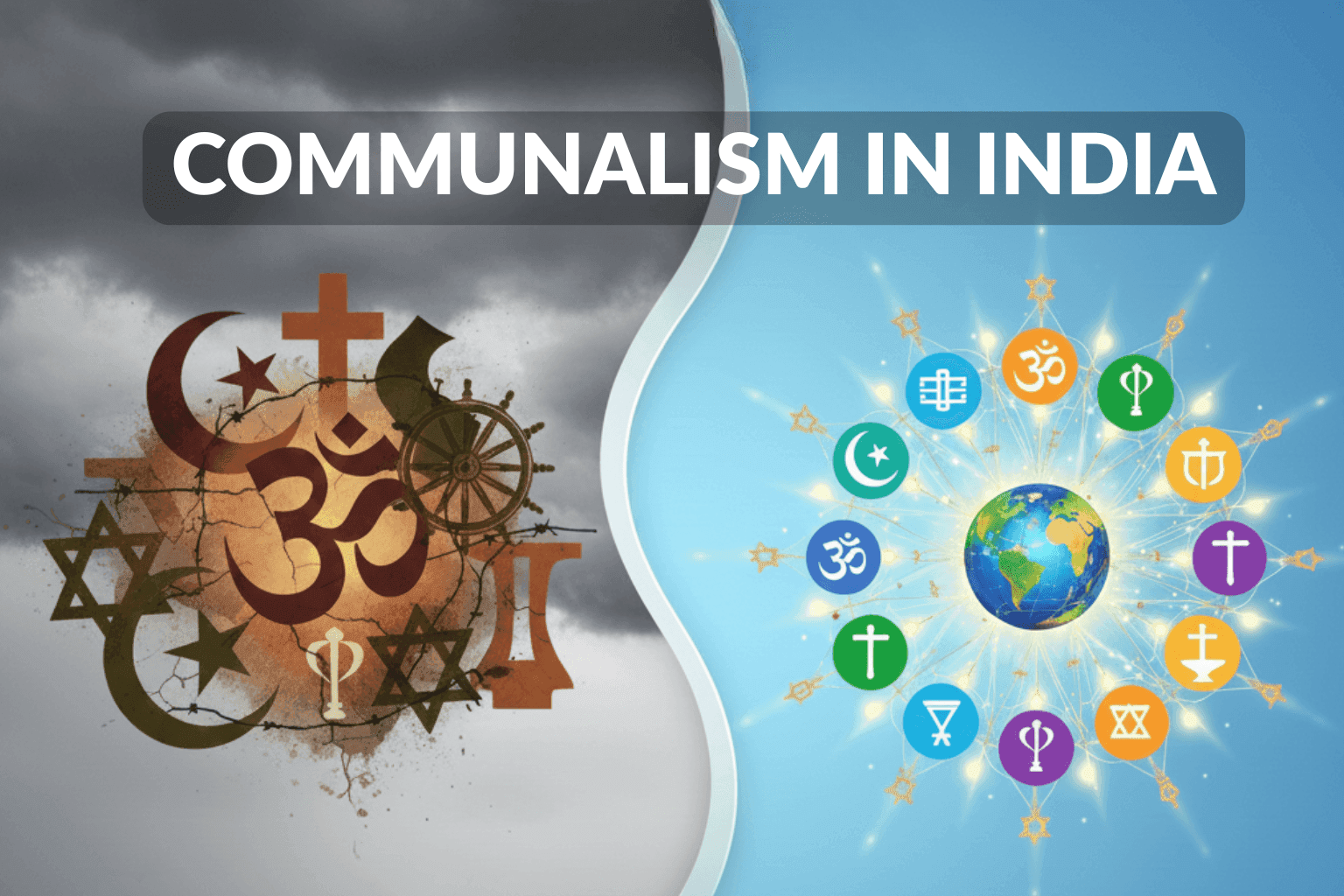List of States and Capitals of India | 28 States & 8 UTs with Map
Nov, 2025
•4 min read
India is a land of incredible diversity where different cultures, languages, religions, and traditions coexist harmoniously. To manage this vast diversity effectively, India's territory is organised into 28 states and 8 union territories. Each has its own capital city, where important decisions are made and policies are implemented.
Understanding this federal structure is fundamental for UPSC aspirants, as related questions can appear in both Prelims and Mains examinations.
States and UTs in India
Article 1 of the Indian Constitution declares India as a "Union of States" comprising 28 states and 8 union territories, totalling 36 administrative divisions.
States have their own elected governments with the power to make laws, while the Central Government directly runs Union Territories through administrators or Lieutenant Governors.

- Andhra Pradesh was the first state formed after independence on November 1, 1956, based on linguistic reorganisation (the Dravidian language Telugu).
- Telangana is the most recently formed state, created on June 2, 2014. It was carved out from Andhra Pradesh after a prolonged movement.
- Every state has a Governor (constitutional head) and a Chief Minister (executive head).
- Administrators or Lieutenant Governors govern Union Territories.
- The States Reorganisation Act of 1956 reshaped India’s map, replacing old colonial boundaries with new states formed mainly based on language.
- Parliament holds exclusive power to create new states or alter existing boundaries under Article 3.
- Some states operate unique dual capital systems to adapt to geographical and climatic challenges.
- Jammu & Kashmir and Ladakh are the newest union territories, both formed on October 31, 2019, when the former state of Jammu & Kashmir was reorganised.
Also read: Important Articles in the Indian Constitution Related to UPSC Functions and Powers
Historical Evolution of States Reorganisation
India’s map has changed over time to reflect its people, their languages, and their regional needs. Here’s how this evolution happened:
- Pre-Independence states: India initially consisted of Part A states (former British provinces), Part B states (former princely states), Part C states (chief-commissioner provinces and smaller regions), and Part D(the Andaman & Nicobar Islands) territories, a complex legacy of colonial rule.
- 1953: First linguistic state of Andhra Pradesh created for Telugu-speaking people.
- 1956: States Reorganisation Act abolished the old classification of Part A, B, C, and D states.
- 1956: Country reorganised into 14 states and 6 union territories on a linguistic basis.
- 1960: Bombay state was bifurcated into Maharashtra and Gujarat.
- 1966: The Punjab Reorganisation Act created Haryana and made Chandigarh a shared capital.
- 1971-72: Himachal Pradesh, Manipur, Meghalaya, and Tripura attained statehood.
- 2000: Three new states created: Chhattisgarh, Jharkhand, and Uttarakhand.
- 2014: Telangana became India's 29th state (later reorganisation reduced the total to 28).
- 2019: Jammu and Kashmir were bifurcated into two union territories, J&K and Ladakh.
Complete List of Indian States and Their Capitals
India currently comprises 28 states, each with its designated capital serving as the administrative headquarters.
| State | Capital | Formation Date |
|---|---|---|
| Andhra Pradesh | Amaravati | 1 November 1956 |
| Arunachal Pradesh | Itanagar | 20 February 1987 |
| Assam | Dispur | 26 January 1950 |
| Bihar | Patna | 26 January 1950 |
| Chhattisgarh | Raipur | 1 November 2000 |
| Goa | Panaji | 30 May 1987 |
| Gujarat | Gandhinagar | 1 May 1960 |
| Haryana | Chandigarh | 1 November 1966 |
| Himachal Pradesh | Shimla (Summer), Dharamshala (Winter) | 25 January 1971 |
| Jharkhand | Ranchi | 15 November 2000 |
| Karnataka | Bengaluru | 1 November 1956 |
| Madhya Pradesh | Bhopal | 1 November 1956 |
| Kerala | Thiruvananthapuram | 1 November 1956 |
| Maharashtra | Mumbai (Summer), Nagpur (Winter) | 1 May 1960 |
| Manipur | Imphal | 21 January 1972 |
| Meghalaya | Shillong | 21 January 1972 |
| Mizoram | Aizawl | 20 February 1987 |
| Nagaland | Kohima | 1 December 1963 |
| Odisha | Bhubaneswar | 26 January 1950 |
| Punjab | Chandigarh | 1 November 1966 |
| Rajasthan | Jaipur | 26 January 1950 |
| Sikkim | Gangtok | 16 May 1975 |
| Tamil Nadu | Chennai | 26 January 1950 |
| Telangana | Hyderabad | 2 June 2014 |
| Tripura | Agartala | 21 January 1972 |
| Uttar Pradesh | Lucknow | 26 January 1950 |
| Uttarakhand | Dehradun (Winter), Gairsain (Summer) | 9 November 2000 |
| West Bengal | Kolkata | 26 January 1950 |
Also read: Constitutionalism in India | UPSC Polity Concepts
Understanding State Capitals
Most states have one fixed capital, where the government, legislature, and key offices function throughout the year. Here are the exceptions:
- Chandigarh is unique because it serves as the shared capital of both Punjab and Haryana, an arrangement created after the Punjab Reorganisation Act, 1966.
- Jammu & Kashmir has two capitals: Srinagar in the summer and Jammu in the winter. This system exists because harsh snowfall makes it difficult to operate from Srinagar during the winter months.
- Himachal Pradesh has Shimla as the summer capital and Dharamshala handling key functions during winter.
- Andhra Pradesh have changed its capital from Hyderabad to Amaravati, reflecting political and administrative priorities.
Also read: Article 21 UPSC Notes: Protection of Life and Personal Liberty | UPSC Polity Fundamental Rights
List of Union Territories of India
Union Territories are regions administered directly by the Central Government through administrators appointed by the President. They serve specific strategic, administrative, or historical purposes.
| Union Territory | Capital | Formation Date |
|---|---|---|
| Andaman and Nicobar Islands | Port Blair | 1 November 1956 |
| Chandigarh | Chandigarh | 1 November 1966 |
| Dadra and Nagar Haveli and Daman and Diu | Daman | 26 January 2020 |
| Delhi (National Capital Territory) | New Delhi | 1 November 1956 |
| Jammu and Kashmir | Srinagar (Summer), Jammu (Winter) | 31 October 2019 |
| Ladakh | Leh (Summer), Kargil (Winter) | 31 October 2019 |
| Lakshadweep | Kavaratti | 1 November 1956 |
| Puducherry | Puducherry | 1 November 1954 |
Also read: Constitutional Bodies in India
Understanding Union Territories
Union Territories (UTs) are smaller regions placed under the direct control of the Central Government. They are administered by Administrators or Lt. Governors appointed by the President.
- Exceptions: Delhi and Puducherry have their own elected assemblies, but their powers are limited and remain under central oversight.
- Unique Cases: Chandigarh is both a UT and the shared capital of Punjab and Haryana.
- Strategic UTs: Ladakh, Jammu & Kashmir, Andaman & Nicobar Islands, and Lakshadweep are UTs due to strategic, security, or geographic reasons.
- Merged UTs: Dadra & Nagar Haveli and Daman & Diu were merged in 2020 to simplify administration.
Also read: 2nd ARC Report UPSC Mains: Key Recommendations & Summary
What is the Difference Between a State and a UT?
Let’s understand the key differences by which an Indian State and a UT are recognised.
| State | Union Territory |
|---|---|
| An integral part of Union with autonomy | Federal territories under direct Central control |
| Governor + Chief Minister + elected legislature | President-appointed Administrator/Lt. Governor |
| Can make laws on the State and Concurrent Lists. | Limited or no law-making powers; Parliament legislates. |
| State government exercises executive power. | The central government exercises executive power. |
| Requires a Constitutional amendment under Article 368. | Can be created by a simple majority in Parliament. |
| Full representation in the Rajya Sabha. | Limited or no representation in the Rajya Sabha. |
| Maharashtra, Tamil Nadu, Uttar Pradesh | Delhi, Puducherry, Chandigarh |
UPSC Prelims Practice MCQ on States & Capitals of India
QUESTION 1
Easy
Which of the following is NOT a Seven Sister State of Northeast India?
Select an option to attempt
Constitutional Provisions Governing States and UTs
- Article 1: Declares India as a "Union of States", establishing it as a union rather than a federation of states, emphasising central supremacy
- Article 2: Grants Parliament power to admit territories into the Union of India
- Article 3: Authorises Parliament to form new states or alter existing state territories, boundaries, or names without requiring a constitutional amendment.
- Article 4: Applies the First and Fourth Schedules regarding territorial changes.
- First Schedule: Lists all states and union territories with their names and extent.
- Fourth Schedule: Contains provisions related to the composition and representation in the Rajya Sabha.
- Article 240: Provides the framework for union territory administration.
- Articles 155-162: Cover the Governor's appointment, powers, and responsibilities.
Zonal Councils for Interstate Co-operation
The States Reorganisation Act, 1956, established five Zonal Councils to promote interstate cooperation:
- Northern Zonal Council: Punjab, Haryana, Rajasthan, Himachal Pradesh, J&K, Ladakh, Delhi, Chandigarh.
- Central Zonal Council: Uttar Pradesh, Uttarakhand, Madhya Pradesh, Chhattisgarh.
- Eastern Zonal Council: Bihar, Jharkhand, West Bengal, Odisha.
- Western Zonal Council: Maharashtra, Gujarat, Goa, Dadra & Nagar Haveli and Daman & Diu.
- Southern Zonal Council: Andhra Pradesh, Telangana, Karnataka, Kerala, Tamil Nadu, Puducherry.
UPSC Mains PYQ on States and and Capitals of India
The political and administrative reorganisation of states and territories has been a continuous ongoing process since the mid-nineteenth century. Discuss with examples. (2022)
Evaluate Your Answer Now!Way Forward
India's federal structure continues evolving to balance regional aspirations with national integration:
- Demand for New States: Persistent demands for Vidarbha, Gorkhaland, Bodoland, and other regions require careful consideration.
- Administrative Efficiency: Need to review the effectiveness of the current state and UT structure.
- Inter-State Coordination: Zonal Councils should be strengthened for better cooperation.
- Linguistic Harmony: Balance between linguistic identity and national unity.
- Development Disparities: Special attention to backward regions within states.
Start Your UPSC Journey Smarter with SuperKalam
Crack UPSC with AI-powered guidance, personalised feedback, PYQs and expert-curated notes, all in one platform.
Join SuperKalam now and take your preparation to the next level!


